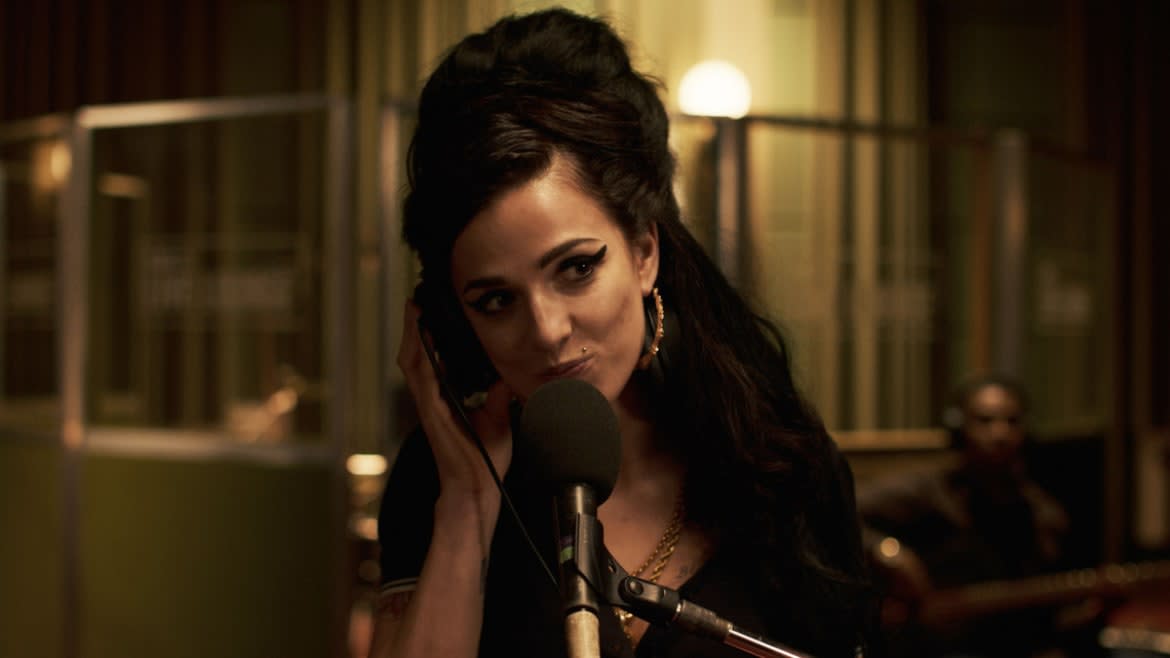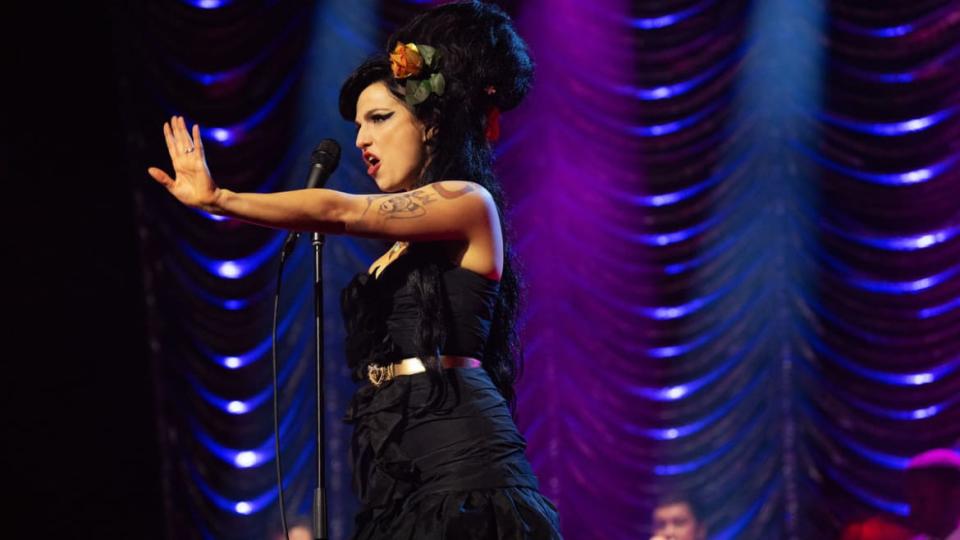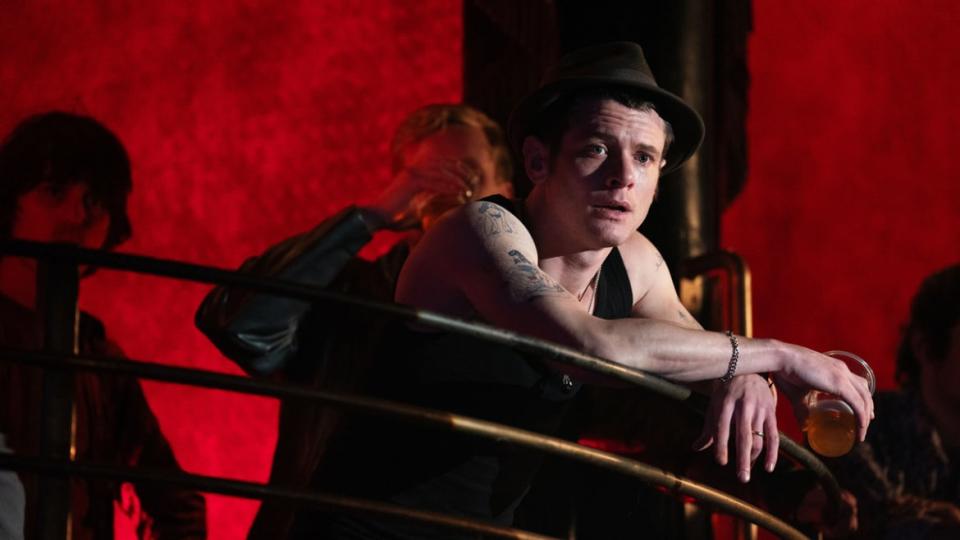They Tried to Make an Amy Winehouse Biopic. We Said ‘Zzz.’

- Oops!Something went wrong.Please try again later.
For as much as has been said about director Sam Taylor-Johnson’s Amy Winehouse biopic, Back to Black—it’s exploitative, it’s too tame, the on-set photos captured during filming were already disgracing its subject’s legacy—there is ironically not much to harp on about Johnson’s film at all. It’s not because Back to Black is surprisingly great or woefully awful, but because it lands firmly in the middle, struggling to say much about the iconic late singer that hasn’t already been mused on by her millions of fans.
In the nearly 13 years since Winehouse’s untimely passing from alcohol poisoning in July 2011, her devoted admirers have remained steadfast. Reviews of the crooner’s posthumous demos and rarities album, 2011’s Lioness: Hidden Treasures, decried the record as a cash grab, with proceeds going to Winehouse’s questionable estate. (Her wealth and legacy are controlled by Mitch Winehouse, Amy’s father, who fans felt was largely responsible for enabling Winehouse’s addictions.) Just two years ago, Neil Patrick Harris was slammed online after photos resurfaced from a 2011 Halloween party where the actor commissioned a meatloaf to look like Winehouse’s corpse.
Johnson and Back to Black’s writer Matt Greenhalgh surely knew they were facing a tough road to the film’s release—especially since the eponymous documentary made about Winehouse’s life, Amy, won the Oscar for Best Documentary Feature in 2016. Why, then, they chose to pursue this unpointed and largely ineffective biopic is a mystery; Johnson’s claims about wanting to tell Winehouse’s story through her music don’t help clarify things. While those songs enhance the movie’s thin screenplay, they were pre-existing works, already telling mythic stories of their writer’s life through her wit and heartbreaking candor. Replicating that personality onscreen is another matter entirely. Though the film’s star, Marisa Abela, is visibly dedicated to getting the role right, Winehouse’s shining supernova proves too bright to simulate, causing Back to Black to stay shrouded in darkness for far too long.

Marisa Abela stars as Amy Winehouse.
Though the film begins a few months before Winehouse’s initial rise to fame, it mostly chronicles the making of the album the movie is named for. Back to Black was a massive international success, earning Winehouse five Grammys and a BRIT Award. It was also a thorny account of love, loss, and addiction, written amidst the tumult of Winehouse’s relationship with her on-off boyfriend Blake Fielder-Civil (Jack O’Connell), who would later become her husband. During Winehouse’s early life, Back to Black is remarkably well-paced. The story moves along amiably as the audience come to know the pre-superstardom Amy, a woman with just as much spunk as the one whose brash personality eventually became tabloid fodder.
Abela communicates all of Winehouse’s pluckiness, which comes tumbling through the screen as we watch a young woman growing into her own. She quibbles with Mitch (Eddie Marsan) and shares tender embraces with her beloved grandmother, Cynthia (Lesley Manville). Songs that would make up Winehouse’s first album, 2003’s Frank, flow from Amy naturally, contemplated after breakups with guys who are little more than clods with ugly tattoos. Amy isn’t hungry for fame but, rather, compelled by the soul and jazz music that has filled her life, hearing echoes of her life in the melodies and words of Ella Fitzgerald and Dinah Washington.
Abela plays Amy during these years with admirable conviction; she deftly channels the energy of someone whose confidence hinges on their ability to make art. But like so many prolific artists, Amy struggles to reconcile the platform her music gives her with the demons and desires that drive her to write it. Eventually, the self-destructive cycle of her fame resembles a snake eating its tail. Amy’s harmless serpent is too consumed by her yearning to notice when apex predators appear in the shadows, licking their chops and lying in wait.
Despite how much audiences were ready to malign Back to Black even before its release, the first half-hour of the film is perfectly decent, sometimes even briefly enchanting. This is largely thanks to Abela’s depiction of the pre-beehive Winehouse, who wears her heart so proudly on her sleeve that it’s hard not to grow wistful. This era of Winehouse’s life bows its head after a scene where Amy and Blake meet for the first time in her favorite pub, where Amy is drinking a nasty, booze-heavy concoction she calls a “rickstacy.” (Supposedly this was Amy’s favorite drink; at the very least, the filmmakers did their research.) Though it’s far from the traditional meet-cute you’d see in your favorite rom-com, this scene is Back to Black at its most undeniably electric. Abela and O’Connell share a barbed chemistry, like two nearly extinguished embers whose mutual spark could become a disastrous blaze.
The Amy Winehouse Biopic No One Wants Is Trashing Her Legacy
This scene is essential to the film. It’s meant to remind viewers exactly why Amy fell for Blake, and how their relationship was doomed from the start. O’Connell exudes dastardly charm as Blake lures Amy into his orbit, and, for a moment, we too are hypnotized by his introducing her to the Shangri-Las, as “Leader of the Pack” blares from the bar’s jukebox. The scene’s allure, however, is fleeting, and soon enough we’re inundated with a deluge of macabre spectacles depicting the couple’s drug-fueled escapades and toxic codependent relationship. But Back to Black doesn’t plunge into the murky horrors of Winehouse’s later life so much as slip into them. The film’s tonal transition is more like an ungraceful misstep, losing its engaging footing and falling into a pool of opaque celebrity sludge.
For the morbidly curious, Back to Black largely avoids any onscreen use of hard drugs or depictions of domestic violence, though not entirely. The movie instead skirts them by showing their aftermath and its emotional impact on Winehouse and her career. It’s the correct move, but it’s an unsatisfying one nonetheless. The film spends too little time with either Winehouse alone or with her closest confidants. Once the movie reaches the depths of Winehouse’s battle with addiction, we’re afforded little perspective on what the singer was thinking or feeling outside of what was publicly documented. There are breakdowns in the street and her tragically haphazard Glastonbury performance in 2008—where she ran back and forth in the pit, accidentally elbowing fans—but few pauses for insight. Perhaps Greenhalgh and Johnson believed that speculating on Winehouse’s emotional state during this time would be a disservice to her memory. But if that were the case, it’s impossible to see why making this movie at all would benefit the already lofty memory of Winehouse in the public’s eyes.
There is no visual flair to justify Back to Black on that front, either. The film’s coloring is flat and entirely dull to look at. Grays and greens do little more than highlight Winehouse’s pale skin as she grows more sallow, making the film ultimately feel far more predatory than it actually is. While Blonde might have divided critics and left audiences revolted, it was at least a biopic about a tortured soul that had some guts. Hyperreal visual aesthetics reflected Marilyn Monroe’s warped mindset and the enclosing marauders hungry for her blood. But the paparazzi culture that tore Winehouse asunder and documented her every last move without remorse is barely even discussed in the movie. We see Amy tell off the press, but rarely how it affects her to have their lenses permanently fixed on her bruises, teeth, and face. Back to Black wants to have it both ways, to be a record of lamb sent to slaughter by the industry and a portrait of Amy’s innocence, maintained as best she could. But by aiming for two things at once, the movie hits neither.

Jack O'Connell stars as Blake Fielder-Civil.
At best, Johnson’s film is a tone-deaf effort, led by a capable actress whose burgeoning career likely won’t wear the stain of Back to Black long. If the film were more injurious and outwardly wicked toward Winehouse, it might take more than a moment for Abela to bounce back. But she is undoubtedly the film’s brightest spot, someone who cares deeply about the woman she has been chosen to play, and hopes to do her justice. Though Abela’s singing doesn’t match Winehouse’s faultlessly, it has more merit than the film’s trailers initially promised—much to my surprise. There are even a handful of moments where the difference between Winehouse’s voice and Abela’s is indistinguishable, leading me to wonder if Johnson’s claims that Abela sang the whole film had been fudged. But Johnson is firm: That’s Abela’s voice in the film, all the way.
Back to Black only grazes catastrophe, which is about as good as an Amy Winehouse biopic can get. But the movie neglects to create any subtext, skimming over the strain heaped on Amy and Mitch’s relationship and her fraught marriage to Blake. After a while, trying to infer is pointless. Exploitation is rightfully avoided, but there are plenty of ways to artfully illustrate the psychological damage Winehouse incurs that Back to Black never deigns to attempt.
Winehouse’s life was packed full of highs and lows in her short 27 years, and Back to Black tries to fit in as much as possible to convey the chaos that consumed her. But without any time to pause and consider—to spend a moment with Amy in her most interior self—we are lost in the same turmoil that she was. Back to Black leaves us unable to understand her on a deeper level than we could by just listening to her music. If you want to know the story of Amy Winehouse, it’s better to spin one of her records. It’s all there in the lyrics, woven into the pain that crackles amidst her unforgettable voice. What she gave the world all on her own was more than enough. Anything else is entirely superfluous.
Get the Daily Beast's biggest scoops and scandals delivered right to your inbox. Sign up now.
Stay informed and gain unlimited access to the Daily Beast's unmatched reporting. Subscribe now.

